A dynamic coastal neighbourhood synonymous with leisure, luxury and nightlife, Copacabana is characterised by million-dollar penthouses, stunning neoclassical buildings and tiny apartments set against a magnificent backdrop of jungle-clad mountains in Rio de Janeiro. From its humble origins as a small fishing village, the "Princess of the Sea" is now a leisure seeker's paradise, bursting with restaurants, nightclubs, bars and hotels, and emits a lively, effervescent energy, perfect for the social traveller. To learn its history, visit Forte de Copacabana, a fort and museum that traces the early days of the Portuguese colony through to the mid-19th century. Art enthusiasts will appreciate a visit to The Eva Klabin Foundation (Casa Museu Eva Klabin), a historical home of famous art and antique collector Eva Klabin that houses over 1000 art pieces from all over the world. A visit to Copacabana is incomplete without the world-famous Copacabana Beach, a 4-kilometre stretch of golden sand dotted with brightly-coloured umbrellas, bars and a popular playground for watersports, football, volleyball, or simply lazing in the sun.
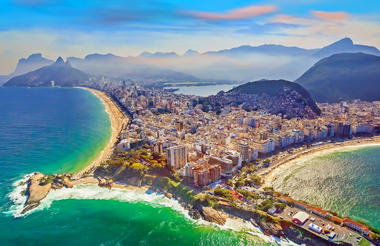
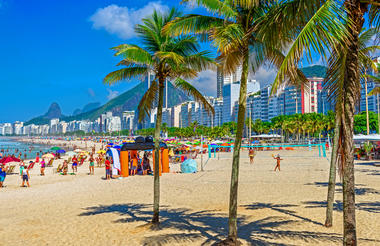
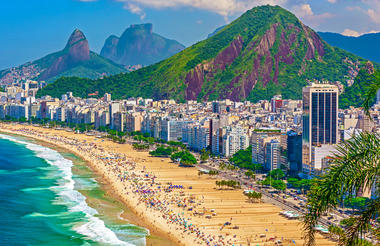
Foz do Iguacu is an important Brazilian town within the state of Parana, set close to the three-way border between Brazil, Argentina and Paraguay. Explore the incredible natural wonders of the UNESCO-listed Iguazu National Park, which offers the chance to see not only the enormous cascading waterfalls (one of the largest in the world) but also numerous rare and endangered plants and animals. At the Bird Park, see bright and beautiful winged species. Marvel at the architecture, atmosphere and sacred ceremonies at the Buddhist Temple and Omar Ibn Al-Khattab Mosque. Delve into local heritage by attending the mesmerising Ipora Show, a celebration of culture through story, song and dance. Other highlights include the Three Borders Landmark, Itaipu Dam, and Dreamland Wax Museum.



Situated in the southwestern Brazilian state of Mato Grosso do Sul, the little farming town of Miranda lies in the heart of indigenous Terena cattle ranching land and serves as a gateway to the adventure destinations of Pantanal and Bonito. This town offers an authentic glimpse into Brazilian culture and the traditional way of life largely unaffected by tourism. Visitors can enjoy excellent bird watching and otter viewing along the crystal-clear Salobrinho River. Local lodges and ranches offer a range of outdoor activities, including horse-riding, jeep safaris, horse riding, piranha fishing, 4x4 safaris, boats, and night treks. Don’t miss the annual festival, Festa do Homem Pantaneiro, a four-day extravaganza of lassoing, rodeo and a variety of Pantanal cowboy traditions.
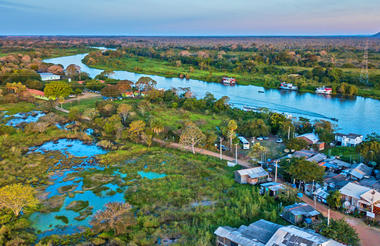
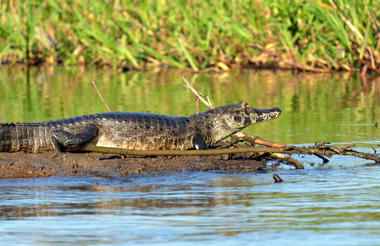
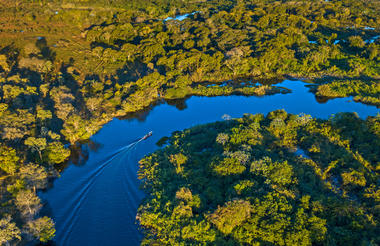
Manaus, located in northwestern Brazil on the banks of the Negro River in northwestern Brazil, is the capital of the Amazon, its largest city and primary tourism hub. Manaus is a bustling urban centre permeated with brightly coloured residential homes, modern high-rise buildings and tour offices where you can book jungle lodges and river cruises. The town lies near the confluence of the Negro and Amazon, known as the ‘Meeting of the Waters’, which is accessible by boat from Manaus. According to local lore, the two rivers run side by side for six kilometres without mixing and, in fact, it’s possible to feel the different temperatures of the two water sources by dipping your hand into the currents on either side of the vessel.
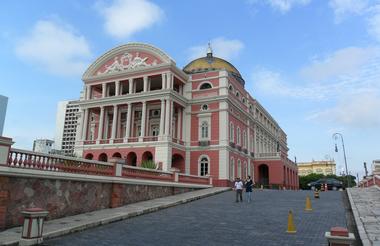

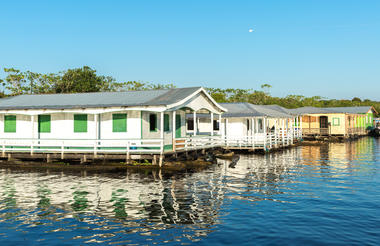
Situated in northwestern Brazil where the mighty Solimoes, Negro, and Madeira rivers converge to form the grand Rio Amazonas, the Amazonas State is the largest in Brazil and is covered almost entirely by the Amazon rainforest. The rivers join at the capital port city of Manaus, which serves as a great base for exploring the area and offers some interesting forest tours and landmarks of its own. Visitors can look forward to taking a boat tour of the Rio Negro's Anavilhanas Archipelago and its hundreds of islands, occupied by a number of indigenous villages. Other popular attractions include the Jardim Botânico Adolpho Ducke in Manaus, the world’s largest urban forest, and, also in Manaus, the gorgeous opera house of Teatro Amazonas, built at the height of the rubber boom.







